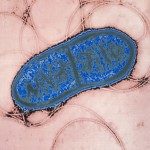Current Opinion in Microbiology 2017, 37:155–160
Although CRISPR-Cas systems naturally evolved to provide adaptive immunity in bacteria and archaea, Cas nucleases can be co-opted to target chromosomal sequences rather than invasive genetic elements. Although genome editing is the primary outcome of self-targeting using CRISPR-based technologies in eukaryotes, self-targeting by CRISPR is typically lethal in bacteria. Here, we discuss how DNA damage introduced by Cas nucleases in bacteria can efficiently and specifically lead to plasmid curing or drive cell death. Specifically, we discuss how various CRISPR-Cas systems can be engineered and delivered using phages or phagemids as vectors. These principles establish CRISPR-Cas systems as potent and programmable antimicrobials, and open new avenues for the development of CRISPR-based tools for selective removal of bacterial pathogens and precise microbiome composition alteration.

